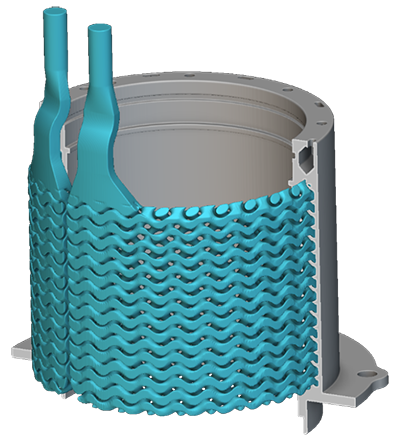

cross-ING is a Swiss engineering company that stands for tailor-made solutions backed by interdisciplinary engineering expertise, designed to meet individual requirements for the future.
With multiple locations across Switzerland and Germany, cross-ING provides access to the right experts, whether companies need specialized knowledge, temporary reinforcement, or long-term support.
The company offers flexible solutions in project management, development, procurement and production, guiding clients with its extensive interdisciplinary know-how.
cross-ING’s strength lies in its exceptional network, which combines expertise from 11 disciplines, including Additive Manufacturing Design, Process Engineering, Sustainability, and Automation. This unique cross-ING Powerplay approach fosters innovation and ensures outstanding results. With 200 full-time engineers, cross-ING supports both internal and client projects, providing expertise exactly where it’s needed. Whether for project support, expert consulting, or on-site assistance, cross-ING helps organizations turn ideas into reality, maximize their potential, and drive lasting success.
In collaboration with a racing team, cross-ing AG re-designed two key components of a cooling circuit using Design for Additive Manufacturing (DfAM) methods. The goal was to optimize performance, reduce weight, and ensure 3D printability while leveraging advanced modeling and simulation techniques in nTop and SimScale. The two components include a motor cooling sleeve for water-cooling the electric motors and a radiator that dissipates heat enough to maintain the coolant below a critical temperature of 65℃. The study was led by Fabian Tunzini (Expert Engineer) and executed by Jonas Keller (Mechanical Engineer) at cross-ing AG. A novel feature of this project was the use of computational design software nTop in combination with a dedicated implicit import workflow into SimScale.
The team transformed the original two-part cooling helix into a single-piece cooling sleeve, integrating triply periodic minimal surface (TPMS) structures to minimize weight while maintaining stiffness and enhancing heat transfer. A simulation-driven approach was used to rapidly iterate through different fluid-domain designs, which were later refined by embedding TPMS lattices. By simulating a base lattice and using the resulting flow data to influence the lattice structure, the team achieved a more even fluid distribution and optimized cooling performance.
The radiator design is based on a TPMS structure, which naturally separates the air and water flow paths while ensuring efficient heat exchange. Key design parameters, such as lattice cell size and mid-surface offset, were iteratively adjusted to fit the team’s requirements. A field-driven approach was implemented, allowing the engineers to selectively modify the TPMS cell size across the volume to optimize flow distribution while ensuring printability.

For both components, Jonas conducted incompressible flow simulations to evaluate flow distribution and pressure drop in the first instance. This was followed by conjugate heat transfer simulations using immersed boundary methods to assess its overall thermal performance. The performance response of design iterations in a DfAM thermo-fluids case is still considered a novel application of simulation. Given the complex heat exchanger geometry of this case it was a learning experience working together with SimScale to develop a streamlined workflow.
In the example of the radiator design we can explain it by comparing three scenarios. Our current method of manually designing and 3D printing to test would take us up to 6 days to print and extract a valuable design response.
Each 3D printed test component typically costs us 2000 Francs (CHF). Using SimScale and standard STL CAD import from nTop this reduces to 5 hours which includes the time to export and import into SimScale, simulation setup, meshing, run time and post-processing. We have already reduced by 20% of the original time it took us to extract valuable design insight.
Moving forward with the implicit import method from nTop to SimScale, we can expect to reduce this further to only 3 hours per design insight meaning the time savings from the new import feature are considerable.

Jonas Keller
Mechanical Engineer at cross-ING and Member at Competence Center AM Design
This project demonstrates how simulation-driven DfAM can enhance cooling efficiency and structural performance in high-performance applications like electric motorsports. We were happy to test the new computational design workflow from nTop into SimScale using the implicit import method which has the potential to save hours of time per CAD cleanup and import for simulation purposes.

Fabian Tunzini
Chief at Competence Center AM Design




Sign up for SimScale
and start simulating now